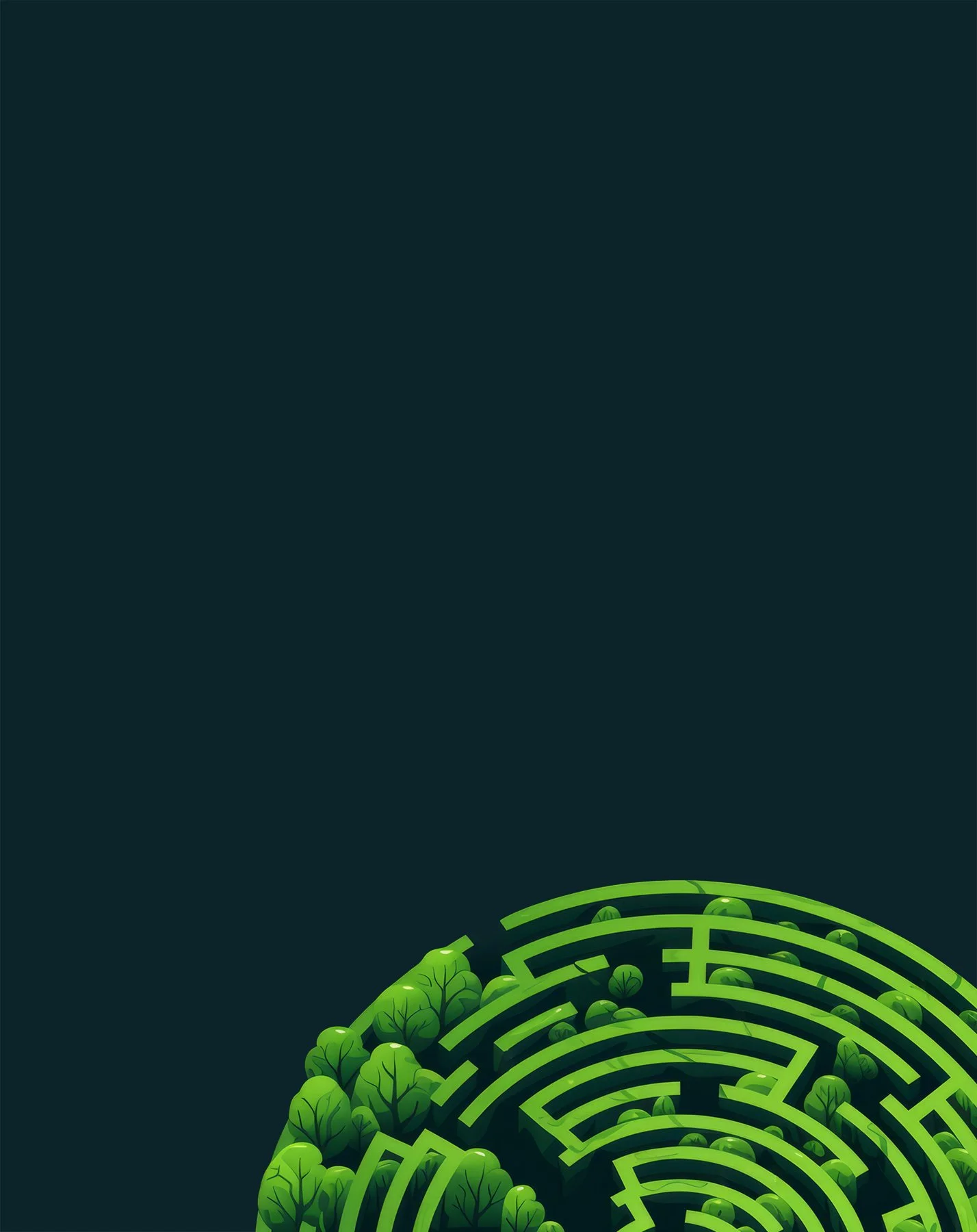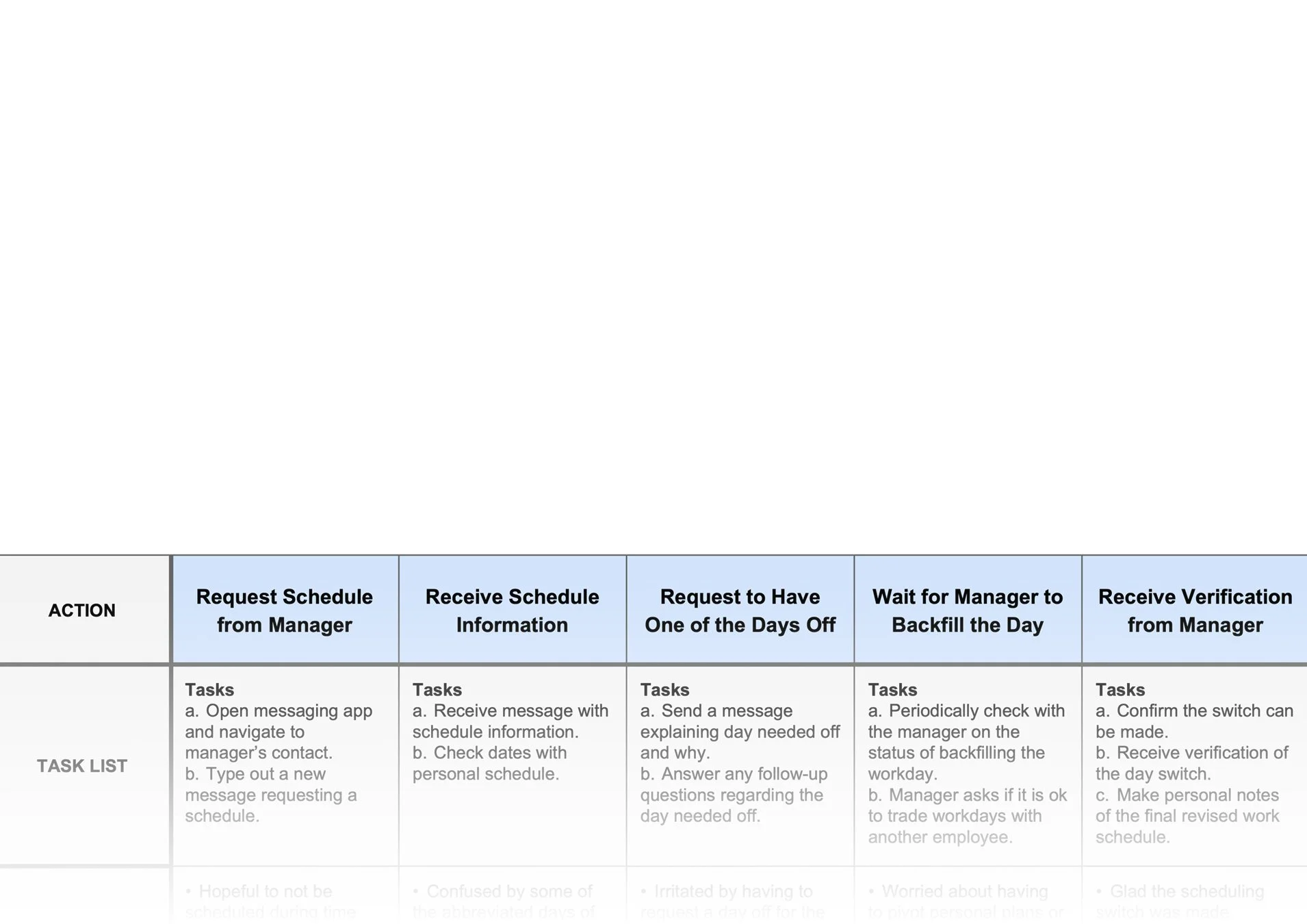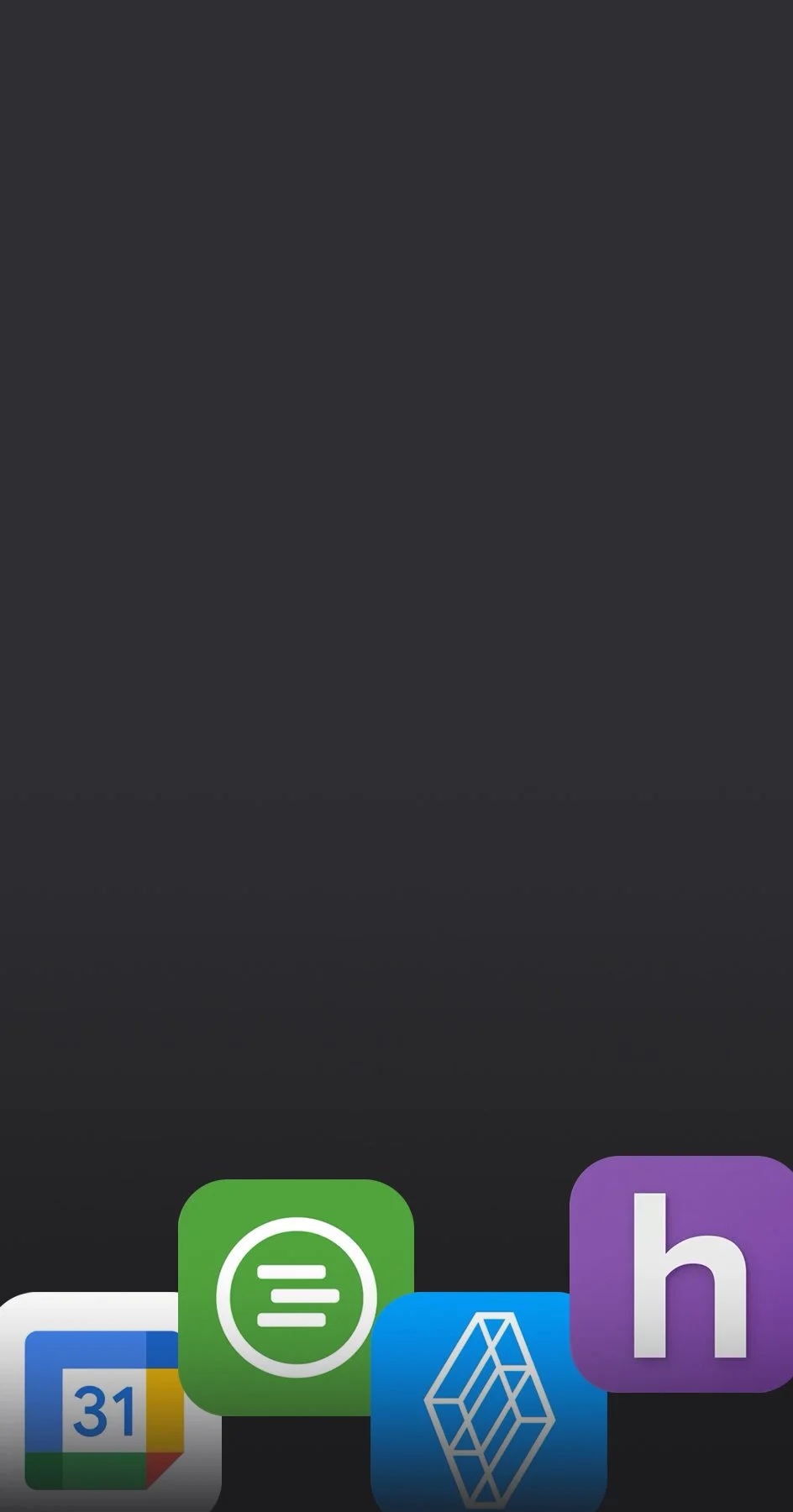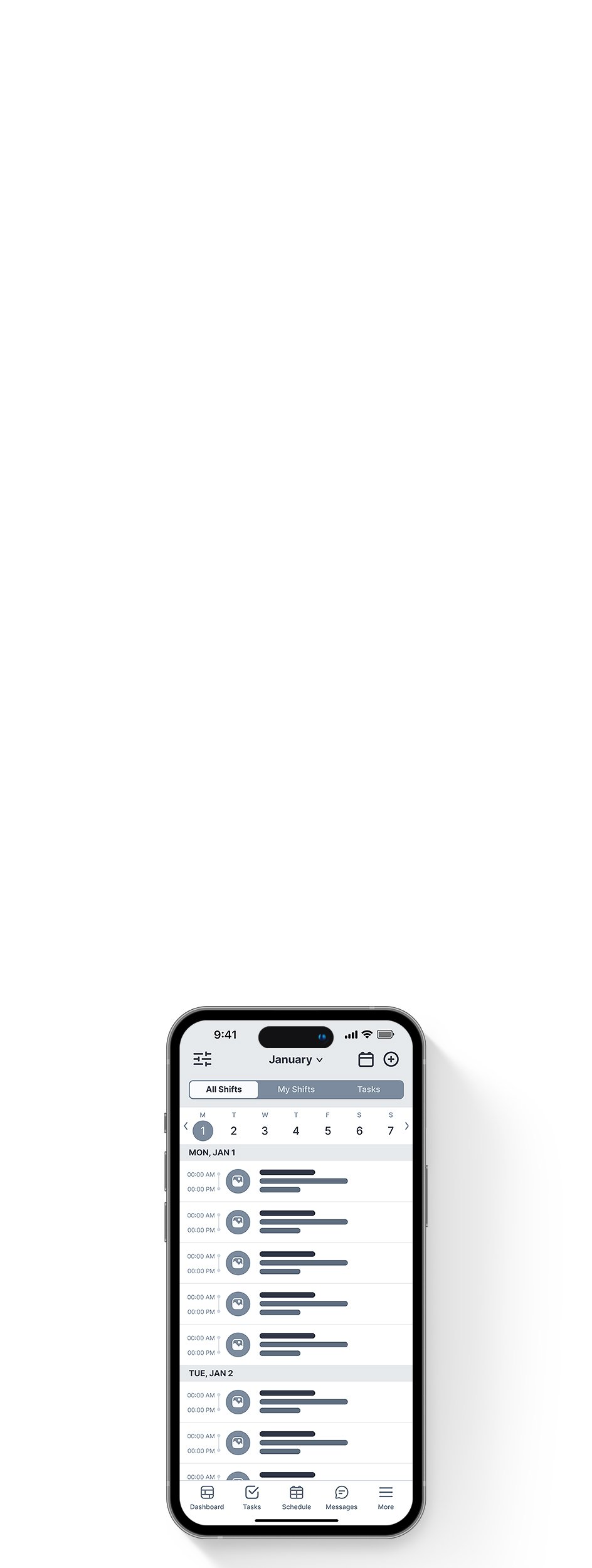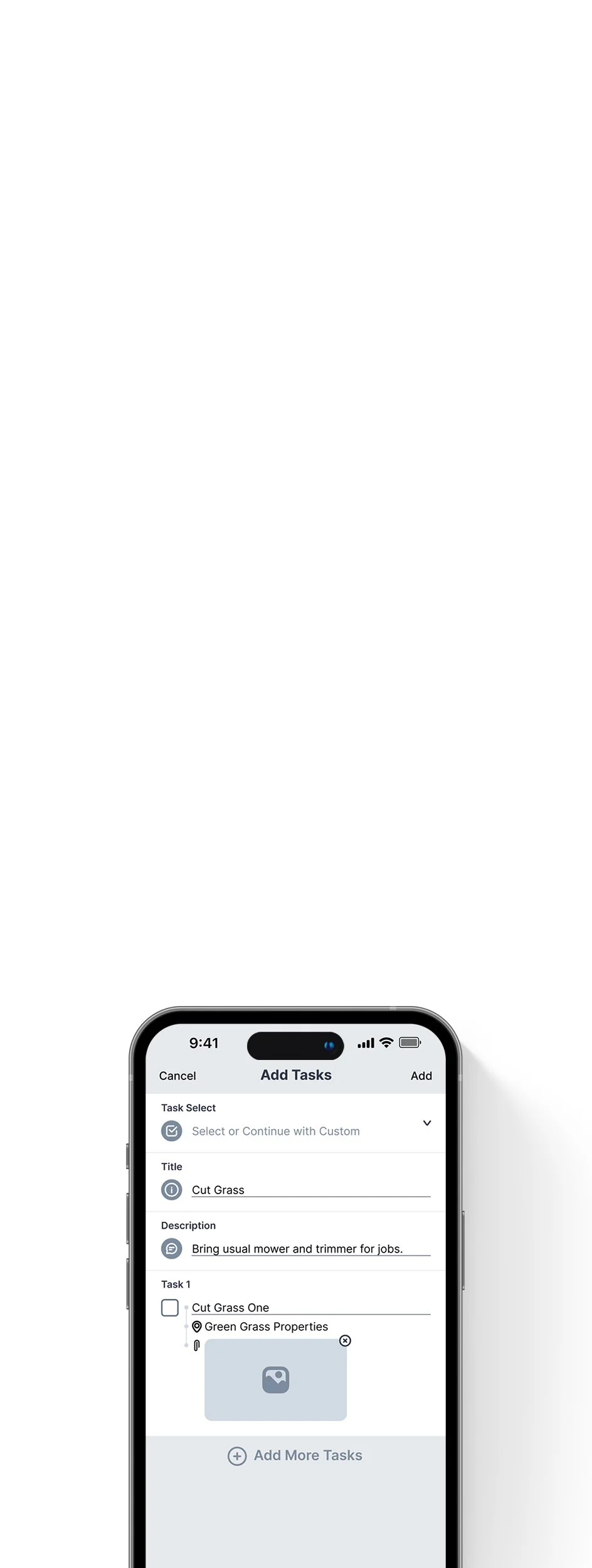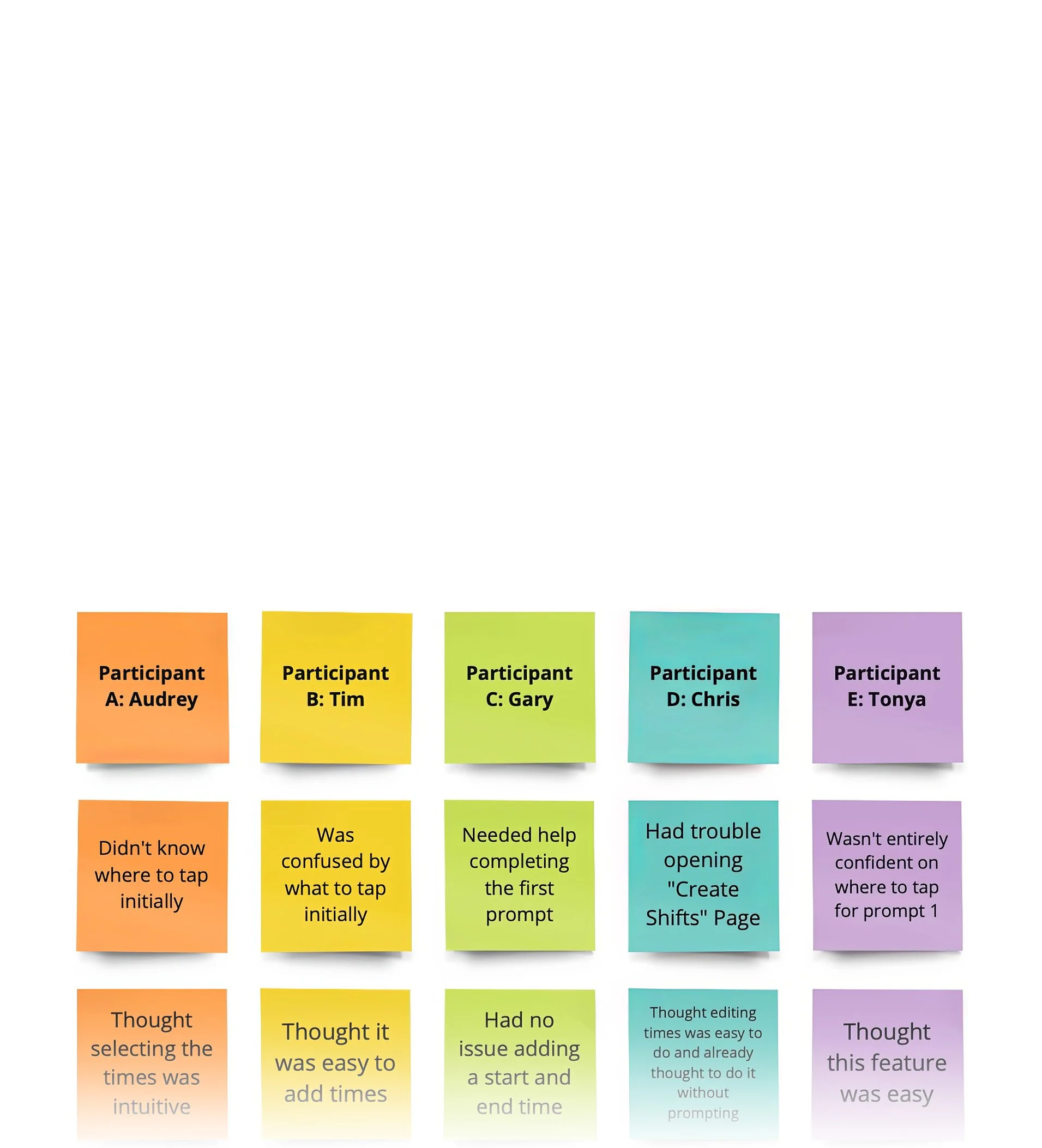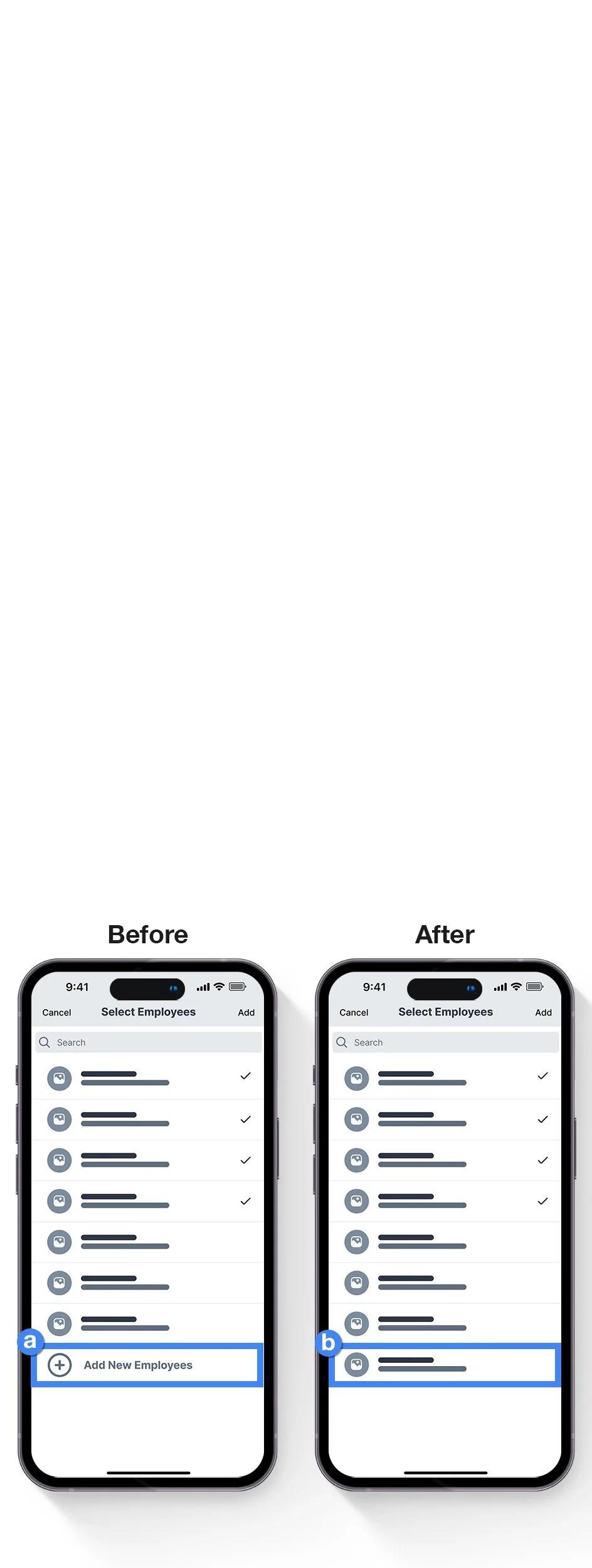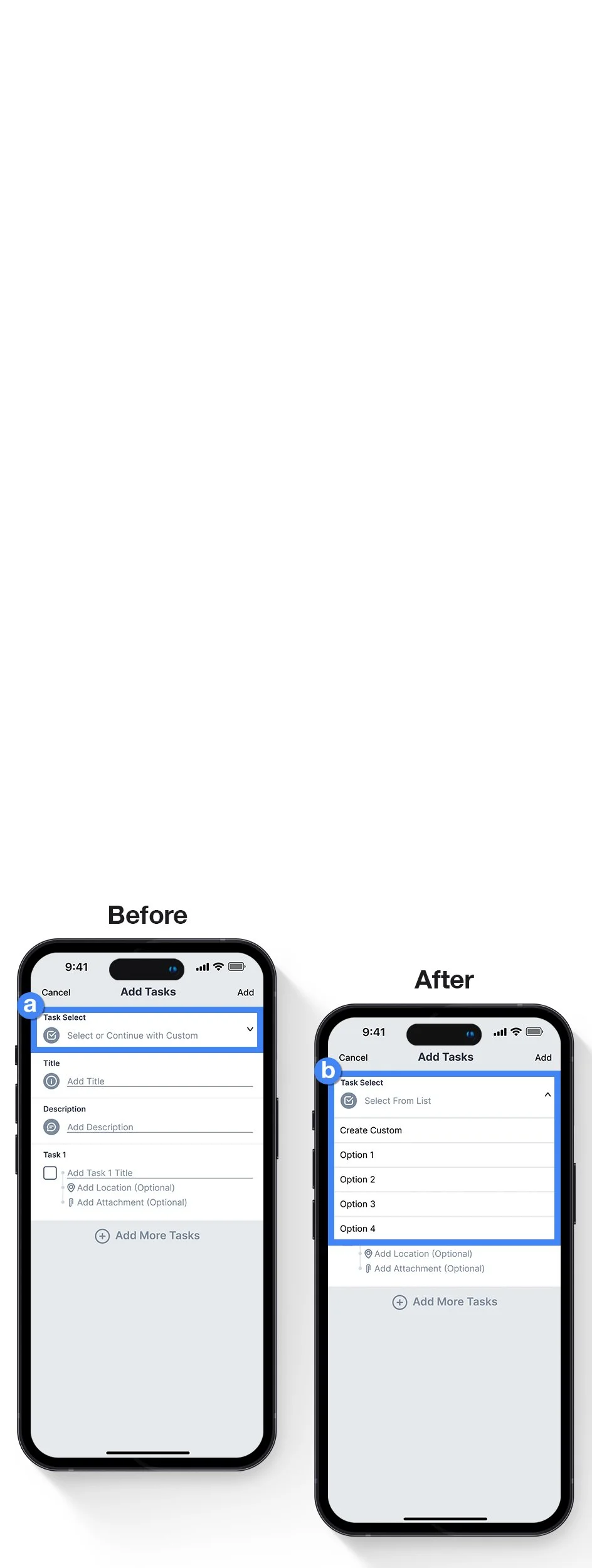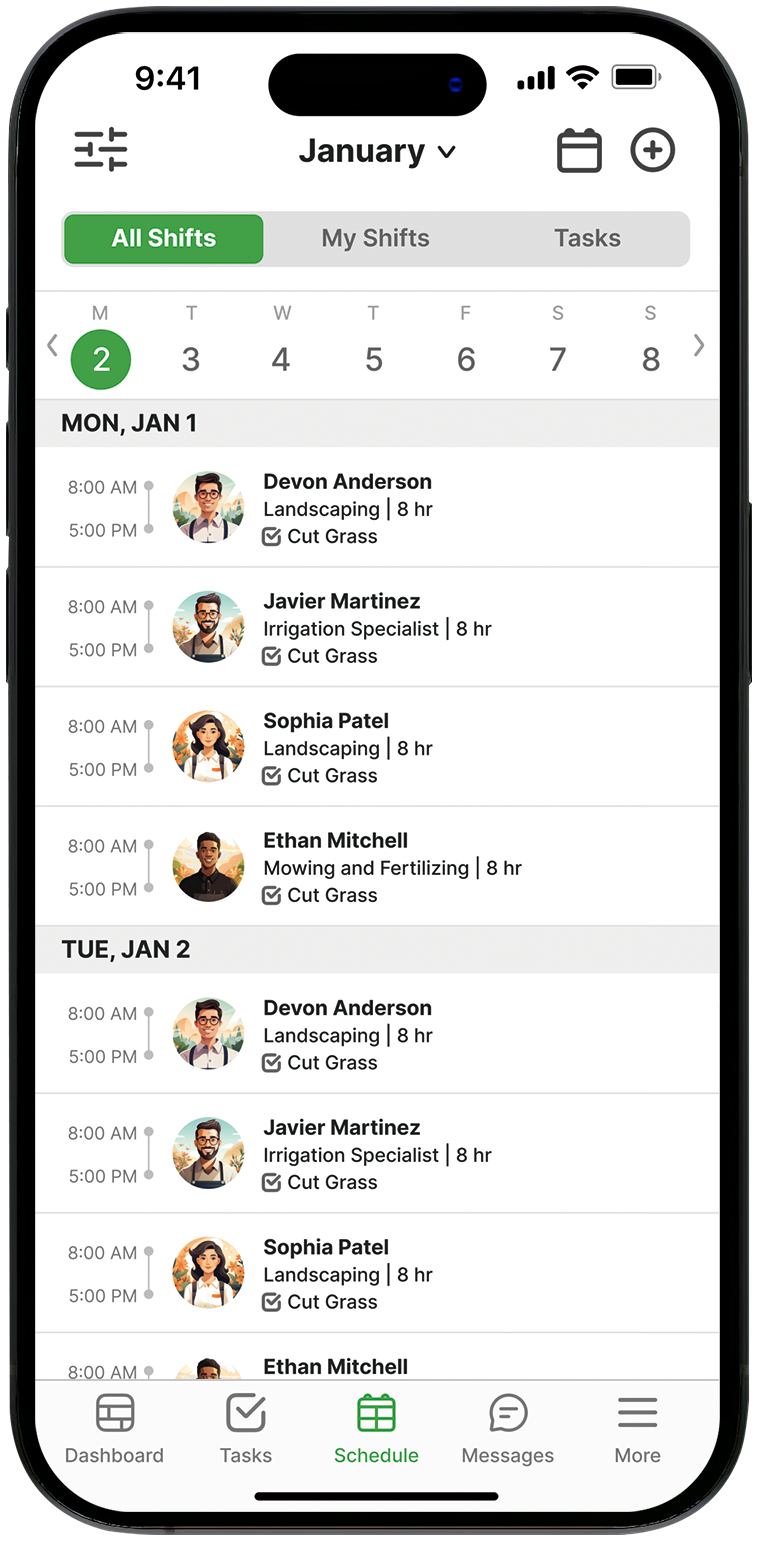Employee Management App
Case Study | UX/UI Design | Research | Prototyping
A mid-sized lawn care business needs an employee management app to help communicate and document employees’ work throughout the week and streamline scheduling.
Duration
Roles
3 Weeks
UI/UX Designer | Researcher
Tools
Figma | Miro | Midjourney | Microsoft Suite | Adobe Suite | Google Bard
Responsibilities
Interviews | Competitive Research | Wireframing | Prototyping | Usability Studies | Iterating on Designs
Challenge
Management needs a modern, cloud-based way to share job information and scheduling with their staff. They would also like live updates of daily jobs.
Solution
Conduct competitive research and find a few viable existing options while designing an app that meets the company’s needs. Present multiple options to the company and help them implement their final decision.
User Research
Summary
I spoke with the employees and management to understand their pain points with the current communication structure. Two user groups were identified: full-time management, and seasonal part-time workers. Both groups had similar frustrations with the current system. Both groups wanted a user-friendly platform to share work information without using personal phones or messaging apps.
Pain Points
Communication
Employees can’t easily communicate work progress to management. Management has to field constant texts about schedules and job details.
Live Updates
Management has no way of tracking the progress of projects, and employees can’t provide task updates on the go.
Information
There is no online resource for employees to review daily job details or see weekly schedules. Management has to ask for job updates proactively.
Personas
Meet Ethan
He is a seasonal part-time worker attending high school who needs on-demand access to his schedule because he wants to make plans outside of his work schedule.
Meet Sara
She is a business owner with two young children who needs an app to share job information with staff because she wants to spend less of the day keeping track of her employees.
User Research
Mapping the Journey
Mapping a typical employee’s journey painted a better picture of how beneficial it would be to have a dedicated scheduling app for this company.
Competitive Audit
We compared the employee scheduling experiences and additional features for four highly rated and popular apps on the Apple App Store. Google Bard was utilized to speed up this process.
Design and User Testing
Paper Wireframes
Getting the scheduling part of the app right was essential because this is a top priority for the users. We developed five different design variations that led to the final design.
Digital Wireframes
Scheduling Flow
It is important to show the flow of updating and reviewing the employee scheduling feature, given this is an essential function to help the users.
Schedule Management
We want the management to be able to update the schedule for their entire workforce in one process quickly and easily.
Custom Task Lists
A customizable task list was essential to improving communication of job responsibilities to the staff.
User Testing
Low-Fidelity Prototype
Once the digital wireframes were clear, a low-fidelity prototype was created and shared with the company.
Usability Study
We tested the low-fidelity prototype on five company employees ranging from part-time seasonal workers to the owners. An affinity diagram was created to help develop, prioritize, and implement insights.
Key Insights from Study
Users need better cues for how to access the “Create Shifts” screen.
The "+ Add New Employees" option can be removed from the “Select Employees” screen.
Users need to see the dropdown on the “Add Tasks” screen do something when they try to use it.
Refining the Design
High-Fidelity Mockups and Study
Once we were happy with the functionality and features offered in the app, I was given the go-ahead to create high-fidelity mockups, which led to a prototype and additional usability study. The final usability study revealed the desire to see a more built-out app to understand it better. More screens were added to complete the journey from signing in to making the schedule.
Final Design
High-Fidelity Prototype
This final prototype demonstrated the user’s sign-in journey, briefly showcased each section, and dove deeply into the scheduling feature.
Impact
Throughout this process, the management team was given stronger tools to help articulate what they needed in a platform to improve the employee management processes within their company. Through making this prototype, we discovered which features were essential to the owners and their staff. Ultimately, we found the company's best solution, which wasn’t apparent initially.
Moving Forward
Next Steps
In the end, we decided to use an already existing app that is currently available on the market for the company. Although it doesn't fulfill all of their requirements, we discovered that it does meet the necessary basics and would be a practical substitute for the time being. We may consider creating a custom app in the future, but for now, we believe that using an existing app is the smartest decision.
Reflection
Building an app from scratch isn’t always the best solution. This process helped us better understand what the company needed. Initially, we were on board with building an employee management app from scratch because the user couldn’t find an existing one to meet their needs. But through this process, we discovered the core needs, settled on a good enough current solution, and eliminated the costly process of starting from scratch.
